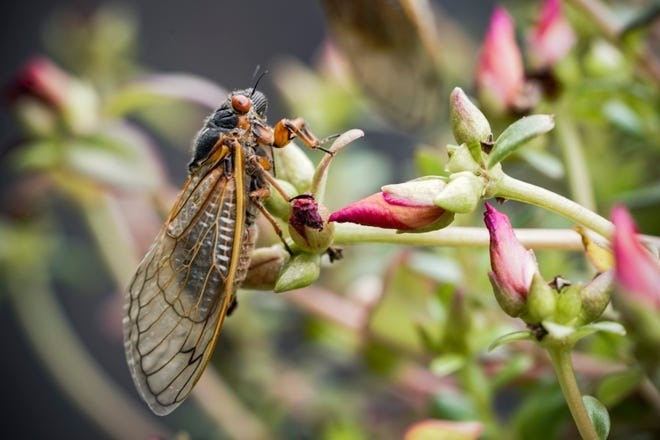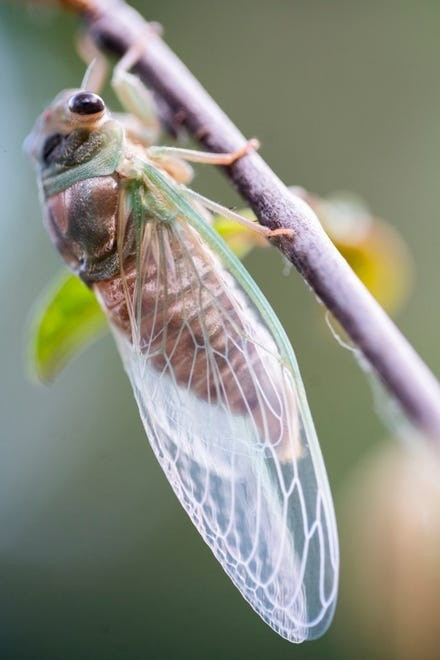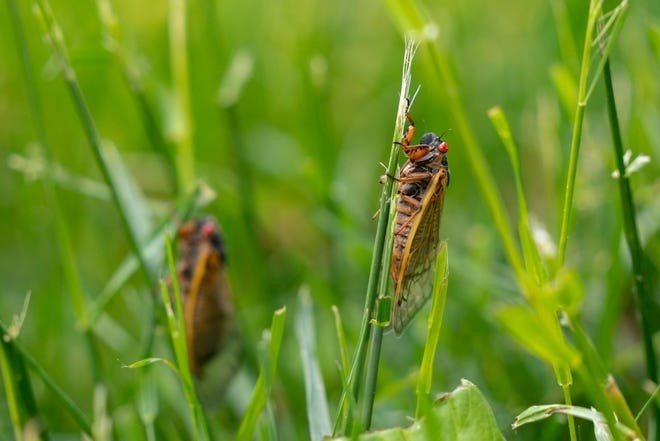Trillions of cicadas are invading the United States. They belong to the Brood XIV group, which has a 17-year cycle. These cicadas are mainly concentrated in the eastern United States. Photo: PT Hamilton/Shutterstock.
Large numbers of cicadas have emerged in several states including Georgia, southern Ohio, Kentucky, Cape Cod, Massachusetts and Long Island, New York. Photo: Michelle Pemberton, IndyStar/USA TODAY Network.
Cicadas spend most of their lives underground. At the end of their 13- or 17-year cycle, they emerge, fly into trees, molt, mate, and die. Photo: Sam Greenwood, Getty Images.
The cicada larvae drop to the ground and bury themselves in the ground, waiting to emerge. They only emerge when the ground temperature reaches 60 degrees Fahrenheit. This usually occurs in late April, but can also occur in May or June depending on the location. Photo: Liz Dufour, The Enquirer/USA TODAY Network.
After emerging from the ground, cicadas have a relatively short lifespan. About five days later, they begin mating and the female lays her eggs. The female releases about 10 to 20 eggs onto tree branches, a total of 500 to 600 eggs per breeding season. Photo: Jessica Koscielniak, USA TODAY.
The eggs hatch after about six weeks, while their parents die shortly after mating. They typically stay above ground for about a month. Photo: Courtney Hergesheimer/Columbus Dispatch.
Most years, a swarm of periodical cicadas emerges from the ground. However, in 2024, the United States will see the emergence of two species of cicadas: the 13-year Brood XIX and the 17-year Brood XIII. Photo: Sean Rayford, Getty Images.
Source: https://khoahocdoisong.vn/nghin-ty-ve-sau-ngoi-len-mat-dat-sau-17-nam-ngu-yen-gay-soc-post1545117.html






























![[Photo] National Assembly Chairman attends the seminar "Building and operating an international financial center and recommendations for Vietnam"](https://vphoto.vietnam.vn/thumb/1200x675/vietnam/resource/IMAGE/2025/7/28/76393436936e457db31ec84433289f72)













































































Comment (0)